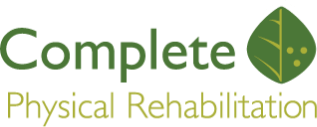Cell phones. They are an irrevocable part of our lives in the 21st century. From banking to shopping, reading news to playing games, your cell phone has become intertwined in the fabric of your daily life. As such, I see almost every Physical Therapy patient in Jersey City or Elizabeth pull out a cell phone in my office either before, during, or after their appointment. And, in doing so, I constantly become witness to something that, as a Physical Therapist, makes me cringe. And that something is:
Bad Cell Phone Posture
What is bad cell phone posture? I guess it is best to show it in pictures, for full effect.
Here I am displaying some common positions that I have seen in my Physical Therapy clinics. I would place all of these positions in the “bad” category. And they all share many of the same characteristics: head bent, rounded back or slouching, phone low near the lap. It is this position that can seriously contribute to a wide range of neck and back issues. And while cell phone usage in this position may not be the primary cause of your neck and back pain, it certainly isn’t helping.
What can you do? We’ll start with a couple of pictures of correct cell phone usage posture:
The skinny:
- The old parental adage “Sit up straight” still holds a lot of meaning, especially when talking about cell phones. Maintain the natural curve of your back by sitting with a lumbar support.
- Be aware of your neck and head. If your neck is bent forward, you are essentially forcing your neck to have to hold the full weight of your head in a forward position. With the average human head weighting approximately 10 pounds, that’s a lot of strain that you’re constantly putting on your neck
- Hold your cell phone at eye level. Just like a computer screen, a cell phone screen at eye level will help with neck strain
- Put the cell phone down. You may notice that your arms are getting tired from holding up your cell phone. That may mean it’s time to put the phone down and walk around a bit.
Now I know it may seem like this list is so simple, but it’s easier to say it, much harder to maintain it. However, if you want to avoid long term neck and back issues, it might be best to start by monitoring your constant daily activities. And in today’s world, it doesn’t get more constant than your cell phone.
Dr. James Pumarada is a Physical Therapist and co-owner of Complete Physical Rehabilitation, a Physical Therapy practice based in Elizabeth and Jersey City, NJ.




